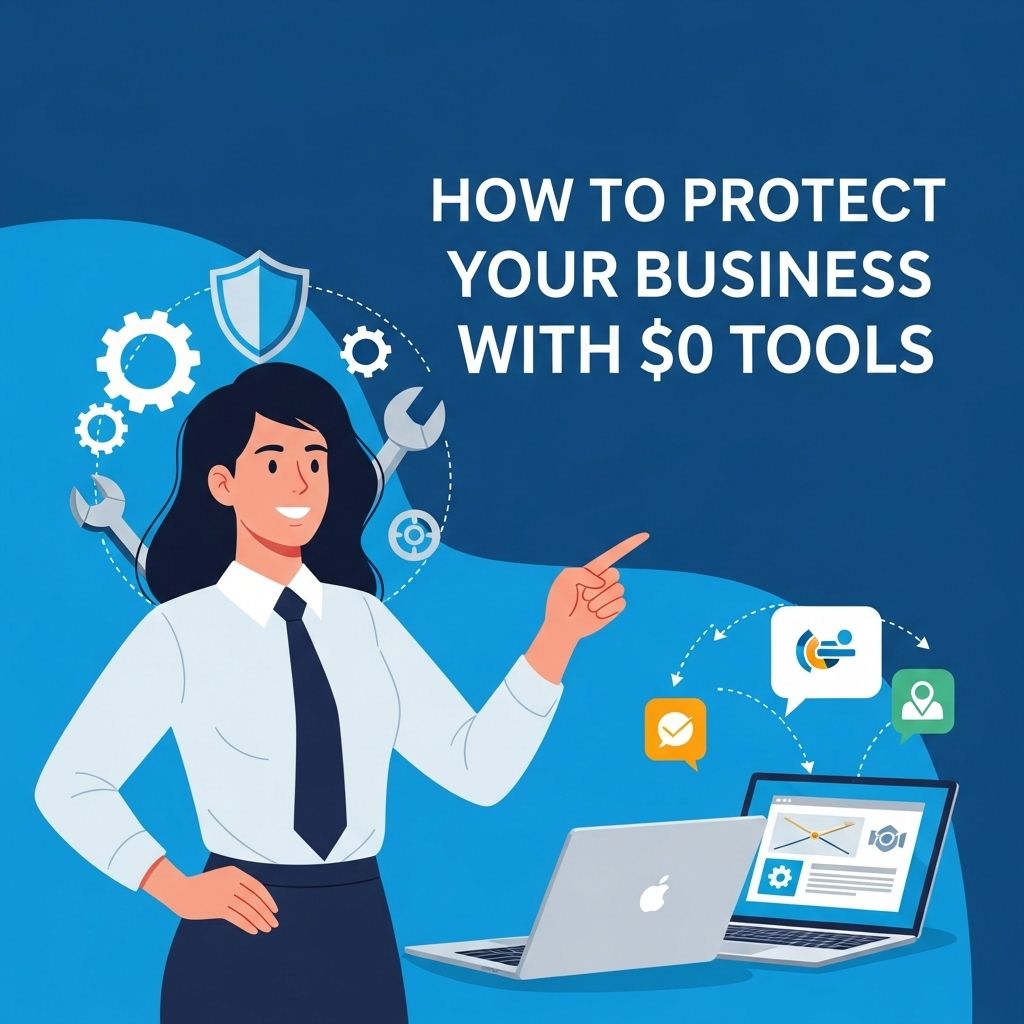In today’s digital age, protecting your business from cyber threats is more crucial than ever. With the rise of technology, vulnerabilities are increasing, and attackers are becoming more sophisticated. Fortunately, there are numerous free tools and methods that can help safeguard your business without stretching your budget. This article delves into various strategies and resources that can fortify your cybersecurity posture.
Understanding Cyber Threats
Before diving into protective measures, it’s essential to understand the landscape of cyber threats that businesses face:
- Malware: Malicious software intended to harm or exploit devices.
- Phishing: Fraudulent attempts to obtain sensitive information by disguising as a trustworthy entity.
- Ransomware: A type of malware that encrypts files and demands a ransom for access.
- Denial of Service (DoS): Attacks that aim to make a service unavailable by overwhelming it with traffic.
Free Tools for Cybersecurity
There are plenty of free tools available that can help enhance your business’s cybersecurity. Below is a categorized list of some of the most effective options:
1. Antivirus and Anti-Malware Software
While premium software often has more features, several free options provide robust protection:
- Windows Defender: Built into Windows 10 and later, it offers real-time protection against viruses and malware.
- Avast Free Antivirus: Known for its strong detection rates and minimal impact on system performance.
- Malwarebytes: Effective for scanning and removing malware, available as a free version.
2. VPN Services
A Virtual Private Network (VPN) encrypts your internet connection, making it more secure:
- ProtonVPN: Offers a free tier with a reasonable data limit and strong encryption standards.
- Windscribe: Provides a free service with a data cap and access to select locations.
3. Password Management
Managing passwords effectively is critical for security:
- LastPass: The free version allows for storing multiple passwords securely.
- Bitwarden: An open-source password manager offering free storage of unlimited passwords.
4. Network Security
Protecting your network is a key component of cybersecurity:
- Wireshark: A network protocol analyzer that helps monitor network traffic for suspicious activity.
- Nmap: A network scanning tool that helps assess the security of your network.
Implementing Cybersecurity Best Practices
In addition to utilizing free tools, adopting best practices can further enhance your security:
1. Regular Software Updates
Ensure that all software, including operating systems and applications, are regularly updated to patch vulnerabilities.
2. Employee Training
Conduct regular training sessions to educate employees about cybersecurity threats and safe practices:
- Phishing Awareness: Teach employees how to recognize phishing attempts.
- Safe Browsing: Encourage safe browsing habits to mitigate exposure to malicious sites.
3. Data Backup
Implement a robust data backup strategy to recover from potential data loss events:
- Use cloud storage solutions like Google Drive or Dropbox for file backups.
- Schedule regular backups and ensure that critical data is stored securely.
Monitoring and Incident Response
It’s not enough to just implement tools and best practices; continuous monitoring and having a response plan in place are vital:
1. Incident Response Plan
Develop a clear incident response plan that outlines steps to take in case of a cybersecurity breach:
- Identify the incident.
- Contain the breach.
- Eradicate the threat.
- Recover and restore services.
2. Regular Security Audits
Conducting regular security audits can help identify vulnerabilities and areas for improvement:
- Assess all software and hardware for potential security issues.
- Review user access permissions and adjust as needed.
Conclusion
Protecting your business from cyber threats doesn’t have to be expensive. By utilizing the plethora of available free tools and adopting best practices for cybersecurity, you can significantly reduce your risk. Remember that security is a continuous process; stay updated on the latest threats and adjust your defenses accordingly. With diligence and the right resources, you can create a safer environment for your business to thrive.
FAQ
What are some $0 tools to protect my business online?
There are several free tools available, such as antivirus software, firewalls, and password managers, that can help secure your business data and protect against cyber threats.
How can I implement strong passwords without spending money?
You can use free password management tools to create and store strong passwords, ensuring each account has a unique and complex password.
What free resources can I use for employee cybersecurity training?
Many organizations offer free online courses and webinars on cybersecurity best practices that can help train your employees without any cost.
Are there any free tools for data encryption?
Yes, there are several free encryption tools available, such as VeraCrypt and AxCrypt, which can help protect sensitive data by encrypting files and folders.
How can I keep my software updated without spending money?
Most software applications offer free updates, so regularly check for updates and enable automatic updates to ensure your business software is always secure.
What are the best practices for securing my business without spending money?
Implementing strong password policies, using two-factor authentication, regularly backing up data, and educating employees about phishing scams are effective strategies that require little to no financial investment.

